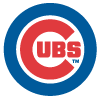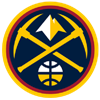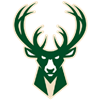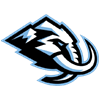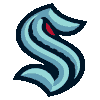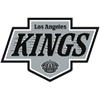This column typically doesn't debut until the start of spring training. Unfortunately, we've all been robbed of a normal baseball season by a cabal of 30 oligarchs who clearly see baseball as nothing more than a business opportunity, all while having the gall to claim that it's actually a bad way to make money.
If turning this spot into a weekly polemic had any hope of helping tilt the balance of power away from those wealth addicts, I'd be more than happy to do so, but sadly I'm as powerless as any other fan as we wait for our billionaire overlords to graciously decide to grant us the right to watch the sport over which they've somehow assumed complete control. Instead, we'll fire up the column on schedule under its usual format, with a slightly expanded introductory section and slightly fewer risers and fallers than normal, as it's hard for players to do much rising and falling when transactions are frozen and players on 40-man rosters aren't able to report to camp.
The indefinite amount of time to kill before the rush of news begins gives us time to delve deeper into general strategy than I normally have time to do in this column. I'll use this space to discuss some big-picture ideas that inform my drafts. On the menu for this week is a look at the two paths to success in fantasy baseball: 1) outplaying your leaguemates every step of the way or 2) getting a bit
This column typically doesn't debut until the start of spring training. Unfortunately, we've all been robbed of a normal baseball season by a cabal of 30 oligarchs who clearly see baseball as nothing more than a business opportunity, all while having the gall to claim that it's actually a bad way to make money.
If turning this spot into a weekly polemic had any hope of helping tilt the balance of power away from those wealth addicts, I'd be more than happy to do so, but sadly I'm as powerless as any other fan as we wait for our billionaire overlords to graciously decide to grant us the right to watch the sport over which they've somehow assumed complete control. Instead, we'll fire up the column on schedule under its usual format, with a slightly expanded introductory section and slightly fewer risers and fallers than normal, as it's hard for players to do much rising and falling when transactions are frozen and players on 40-man rosters aren't able to report to camp.
The indefinite amount of time to kill before the rush of news begins gives us time to delve deeper into general strategy than I normally have time to do in this column. I'll use this space to discuss some big-picture ideas that inform my drafts. On the menu for this week is a look at the two paths to success in fantasy baseball: 1) outplaying your leaguemates every step of the way or 2) getting a bit lucky.
I've run a league for friends and family the past several years. I don't think it's hubris to say that I'm the strongest player in that league, as that's a simple function of the fact that I write about fantasy baseball for a living while they all do things that are much more useful to society. It would be unreasonable to expect them to spend 40-plus hours a week thinking about baseball like I do. There are plenty of strong players in that league, and I definitely don't win every year, but I feel confident heading into each draft that I'm among the favorites.
In that league, I don't try to do anything particularly fancy. I trust myself to gain small advantages throughout the season, with slightly better picks in each round of the draft, slightly better FAAB moves, slightly better start/sit decisions and slightly better trades. As long as I can mitigate disasters, I have every reason to believe those small advantages will add up over the course of the campaign, leaving me right where I want to be at the end of the year.
In contrast, I also play in industry leagues like TGFBI and in office leagues with RotoWire coworkers. In those leagues, it would be pure cockiness if I believed I had a significant edge. I can't therefore simply plan around minimizing risk and trusting that I can outperform my opponents in every round and in every FAAB period. That's not to say that I should go all in maximizing risk. Sure, if I high-roll everything, I'll have a fantastic year, but the most likely outcome of that plan is almost definitely disastrous. There's no reason to go overboard, but I do think it's imperative to take on at least a modest amount of risk.
Consider the following thought experiment: you have a deck of cards that consists of only 8s, 9s, and 10s, while your leaguemates all have a standard deck. Your median draw is a 9, while your opponents' median draw is an 8. If you only had one opponent, I'd back you to win more than your fair share of draws. But in fantasy baseball, you usually have something like nine or 11 or 14 other players in their league. All it takes is for one of them to draw a face card or an ace and you simply can't beat them. You'll average a top-half finish, but things are bound to break right for at least one of your many opponents who took more risks than you were comfortable with.
I recommend trying to assess where you stand among your leaguemates prior to each draft. There's every chance your league matches the first type I described, where an honest assessment places you as one of the strongest players. You're here reading a fantasy baseball article in the middle of a lockout, after all, so you're almost certainly more committed than the average player. If that's the case, trust yourself to outplay your opponents and don't go out of the way to build a high-variance team.
But if you know your leaguemates spend their free time in similar ways, or if you're playing a high-stakes contest on a platform like NFBC, a risk-free build is likely to lead you to a finish that's above average but out of the money. It's worth noting that many of the best high-stakes players don't seem to advocate for a particularly risky approach to those contests. I've struggled with whether that fact might argue against the theory I've presented, but I believe what's actually going on is that those players assessed that even in those tough draft rooms, they're still strong enough players that they can afford to follow the "outplay everyone slightly at every step" plan. In many cases, the evidence backs up that confidence.
Honest self-reflection is the key. If you correctly assess that you're one of the favorites, dial your risk tolerance down slightly and trust yourself to win with a more disciplined approach. If you can't in good faith claim to be much better than the average drafter in the room, increase your risk tolerance slightly to avoid winding up with a respectable team that has little room to outperform expectations.
With that general-theory discussion out of the way, it's time to break down what little scraps of fantasy-relevant news have trickled in during the last few months. The players rising and falling below have seen their fortunes change mainly due to injury, while others are moving due to the apparently imminent arrival of the universal designated hitter.
RISERS
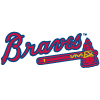 Ronald Acuna, OF, Atlanta: Acuna was on track for a potential career year last season, hitting .283/.394/.596 with 24 homers and 17 steals through 82 games. Those numbers were backed by a career-high 20.3 percent barrel rate and a career-low 23.6 percent strikeout rate. Unfortunately, his season was cut short by a torn ACL in July, an injury which typically takes around eight or nine months from which to recover. He would have had at least a chance to return by Opening Day without the lockout, though missing a month or six weeks would hardly have been a surprise. While the expected date of the adjusted Opening Day remains unclear, each day the lockout drags on increases the percentage of the season Acuna is likely to be available for increases.
Ronald Acuna, OF, Atlanta: Acuna was on track for a potential career year last season, hitting .283/.394/.596 with 24 homers and 17 steals through 82 games. Those numbers were backed by a career-high 20.3 percent barrel rate and a career-low 23.6 percent strikeout rate. Unfortunately, his season was cut short by a torn ACL in July, an injury which typically takes around eight or nine months from which to recover. He would have had at least a chance to return by Opening Day without the lockout, though missing a month or six weeks would hardly have been a surprise. While the expected date of the adjusted Opening Day remains unclear, each day the lockout drags on increases the percentage of the season Acuna is likely to be available for increases.
If the season is delayed by six weeks or more, which seems entirely possible, there's a chance Acuna doesn't miss any time at all. Even in that case, the 24-year-old outfielder's stock will presumably remain slightly below where it would be if not for the injury, as it's reasonable to be concerned about how often he'll get the green light on the basepaths immediately after returning from knee surgery. Still, we're talking about a player who was the top overall pick in both the last two seasons, so those who drafted Acuna in the late first round or even early second back in more optimistic times may end up with quite a bargain. Acuna has an NFBC ADP of 7.7 in March compared to 11.0 through the end of February, and I expect him to keep rising as the season's expected start date keeps getting pushed back.
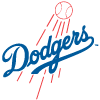 Max Muncy, 1B/2B, Dodgers: Muncy, like Acuna, is returning from an injury, though his recovery timeline is even more ambiguous. An elbow injury suffered in last year's regular-season finale kept him out of the postseason, and he was later diagnosed with both a torn UCL and a dislocated elbow in late November. It seemed as though there was a very real chance of him missing a substantial portion of the season if surgery was required. The lack of spring training has meant reporters have been unable to provide the typical amount of updates for a player recovering from a significant injury, leaving drafters in the dark as to Muncy's expected playing time. He's been picked as early as 52nd in NFBC contests and as late as 256th.
Max Muncy, 1B/2B, Dodgers: Muncy, like Acuna, is returning from an injury, though his recovery timeline is even more ambiguous. An elbow injury suffered in last year's regular-season finale kept him out of the postseason, and he was later diagnosed with both a torn UCL and a dislocated elbow in late November. It seemed as though there was a very real chance of him missing a substantial portion of the season if surgery was required. The lack of spring training has meant reporters have been unable to provide the typical amount of updates for a player recovering from a significant injury, leaving drafters in the dark as to Muncy's expected playing time. He's been picked as early as 52nd in NFBC contests and as late as 256th.
The delayed start to the season makes him a more palatable pick even absent any information about his recovery, but his stock should rise even further after he said in an interview Friday that he's on track for the start of the regular season. It's possible that's nothing more than wishful thinking, but each day the season gets delayed buys him more time to get back up to full speed. The arrival of the universal designated hitter should help keep Muncy in the lineup on a regular basis early in the season as he works his way back from injury. No other qualified hitter who matched Muncy's 16.1 percent barrel rate last season could also match his 20.3 percent strikeout rate, so the appeal is considerable even before you account for his dual eligibility.
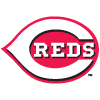 Mike Moustakas, 3B, Reds: While the universal DH seemingly benefits Muncy by a fair amount, it arguably has a much greater impact on a number of fringe corner bats in the National League. Not every team will go with a dedicated DH, but fringe starters will nonetheless benefit from the addition of an extra lineup spot every game. Moustakas is one of the most notable beneficiaries, as it was easy to envision him dropping to a bench role following a poor season in which he struggled to a .208/.282/.372 line in 62 games while battling a heal injury for much of the year. That line came with similarly uninspiring peripherals, so it's defensible to remain completely out on him heading into his age-33 season, but the added lineup spot at least keeps him in the endgame conversation. He still plays in one of the more hitter-friendly parks in the league, and he hit .262/.326/.490 the previous six seasons, averaging 30.6 homers per 600 plate appearances. Moustakas is still going in the reserve rounds in 15-team leagues over the last month, so you can grab him as an upside play while feeling free to drop him if he continues to struggle.
Mike Moustakas, 3B, Reds: While the universal DH seemingly benefits Muncy by a fair amount, it arguably has a much greater impact on a number of fringe corner bats in the National League. Not every team will go with a dedicated DH, but fringe starters will nonetheless benefit from the addition of an extra lineup spot every game. Moustakas is one of the most notable beneficiaries, as it was easy to envision him dropping to a bench role following a poor season in which he struggled to a .208/.282/.372 line in 62 games while battling a heal injury for much of the year. That line came with similarly uninspiring peripherals, so it's defensible to remain completely out on him heading into his age-33 season, but the added lineup spot at least keeps him in the endgame conversation. He still plays in one of the more hitter-friendly parks in the league, and he hit .262/.326/.490 the previous six seasons, averaging 30.6 homers per 600 plate appearances. Moustakas is still going in the reserve rounds in 15-team leagues over the last month, so you can grab him as an upside play while feeling free to drop him if he continues to struggle.
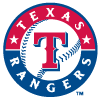 Isiah Kiner-Falefa, SS, Rangers: Kiner-Falefa's inclusion is entirely due to the torn labrum suffered by his teammate, Josh Jung (discussed below). For most of summer, it looked as though Kiner-Falefa was unlikely to do anything other than keep the seat warm for a few weeks until Jung's arrival, as the signing of Corey Seager filled the shortstop spot he occupied last year. With Jung now out for most if not all of the year, Kiner-Falefa lines up as the everyday third baseman, barring any other post-lockout additions. He hits for next to no power, as he owns a career 1.5 percent barrel rate and has never reached double-digit homers or posted an ISO north of .100. He can be counted on for help in batting average, however, as his 13.3 percent strikeout rate last season helped him hit .271, and he pairs that with a fair amount of speed, stealing 20 bases last season. None of that adds up to a particularly exciting player, but anyone with the ability to steal bases is worth considering, especially as he'll be eligible at both shortstop and third base after a few weeks.
Isiah Kiner-Falefa, SS, Rangers: Kiner-Falefa's inclusion is entirely due to the torn labrum suffered by his teammate, Josh Jung (discussed below). For most of summer, it looked as though Kiner-Falefa was unlikely to do anything other than keep the seat warm for a few weeks until Jung's arrival, as the signing of Corey Seager filled the shortstop spot he occupied last year. With Jung now out for most if not all of the year, Kiner-Falefa lines up as the everyday third baseman, barring any other post-lockout additions. He hits for next to no power, as he owns a career 1.5 percent barrel rate and has never reached double-digit homers or posted an ISO north of .100. He can be counted on for help in batting average, however, as his 13.3 percent strikeout rate last season helped him hit .271, and he pairs that with a fair amount of speed, stealing 20 bases last season. None of that adds up to a particularly exciting player, but anyone with the ability to steal bases is worth considering, especially as he'll be eligible at both shortstop and third base after a few weeks.
FALLERS
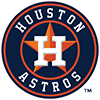 Lance McCullers, SP, Astros: McCullers exited his ALDS start against the White Sox with forearm discomfort and missed the rest of the postseason. An exact diagnosis wasn't given at the time, though manager Dusty Baker said later in the playoffs that McCullers wasn't dealing with any structural damage. That left drafters with seemingly only minor concerns, as he was taken at an average pick of 171.6 in NFBC drafts through Feb. 23. That day, however, news emerged that McCullers was behind schedule in his rehab and was unsure of his readiness for Opening Day. His flexor tendon was reportedly off the bone. He's since been plummeting in drafts, falling to an ADP of 211.8 since Feb. 24. There's a case to be made that he should fall much further than that, as McCullers is no stranger to serious arm troubles, having undergone Tommy John surgery after the 2018 season. While the delayed start to the season does buy him more time to heal, it's hard to move him up draft boards until he's back on the mound.
Lance McCullers, SP, Astros: McCullers exited his ALDS start against the White Sox with forearm discomfort and missed the rest of the postseason. An exact diagnosis wasn't given at the time, though manager Dusty Baker said later in the playoffs that McCullers wasn't dealing with any structural damage. That left drafters with seemingly only minor concerns, as he was taken at an average pick of 171.6 in NFBC drafts through Feb. 23. That day, however, news emerged that McCullers was behind schedule in his rehab and was unsure of his readiness for Opening Day. His flexor tendon was reportedly off the bone. He's since been plummeting in drafts, falling to an ADP of 211.8 since Feb. 24. There's a case to be made that he should fall much further than that, as McCullers is no stranger to serious arm troubles, having undergone Tommy John surgery after the 2018 season. While the delayed start to the season does buy him more time to heal, it's hard to move him up draft boards until he's back on the mound.
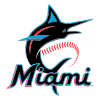 Sixto Sanchez, SP, Marlins: Sanchez was a top prospect for several years and appeared to be delivering on that promise in his seven-start debut back in 2020, posting a 3.46 ERA as a 21-year-old while averaging 98.8 mph with his fastball. Unfortunately, a shoulder injury suffered prior to the start of last season wound up requiring surgery and kept him out for the entirety of the campaign. Recent reports revealed that the problem isn't going away anytime soon. There were suggestions that he was dealing with an entirely separate injury, but it appears instead he's simply taking longer than expected to recover from his procedure. An inability to work with team trainers due to the lockout is likely a factor, though there were also rumors that he wasn't closely following the team's rehab plan. He's now not expected to return until midseason. That seemingly takes him out of consideration for standard redraft leagues, as he's unlikely to be impactful enough late in the year to be worth stashing on the bench all season. He's a potential last-round option in leagues with a separate injured list, and he's a justifiable selection very late in deep draft-and-hold formats, but his appeal everywhere has dropped considerably, even in dynasty leagues.
Sixto Sanchez, SP, Marlins: Sanchez was a top prospect for several years and appeared to be delivering on that promise in his seven-start debut back in 2020, posting a 3.46 ERA as a 21-year-old while averaging 98.8 mph with his fastball. Unfortunately, a shoulder injury suffered prior to the start of last season wound up requiring surgery and kept him out for the entirety of the campaign. Recent reports revealed that the problem isn't going away anytime soon. There were suggestions that he was dealing with an entirely separate injury, but it appears instead he's simply taking longer than expected to recover from his procedure. An inability to work with team trainers due to the lockout is likely a factor, though there were also rumors that he wasn't closely following the team's rehab plan. He's now not expected to return until midseason. That seemingly takes him out of consideration for standard redraft leagues, as he's unlikely to be impactful enough late in the year to be worth stashing on the bench all season. He's a potential last-round option in leagues with a separate injured list, and he's a justifiable selection very late in deep draft-and-hold formats, but his appeal everywhere has dropped considerably, even in dynasty leagues.
 Josh Jung, 3B, Rangers: Jung appeared to be on the verge of a promotion prior to the start of last season, as the 2019 eighth-overall pick made enough progress in alternate-site action in 2020 that he was thought to not need much more time in the minors despite never previously playing above Low-A. Unfortunately, there's been a run of bad luck for the young third baseman since then. A stress fracture in his left foot suffered in mid-March last year prevented him from making his season debut until mid-June, and while he cruised to a .326/.398/.592 line in 78 games in the upper minors after his return, he didn't get the chance to earn his first big-league call-up. He was thought to be the favorite to claim the hot corner quite early in the year this season, potentially as early as Opening Day, but the injury bug bit again. He suffered a torn labrum in his left shoulder in mid-February and underwent surgery, which should take 6-8 months from which to recover. That places his return date sometime between mid-August and mid-October, meaning there's no guarantee he plays at all at the major-league level this year. His prospect pedigree is still there, and he's undoubtedly worth holding onto in dynasty leagues, but there's little reason to draft him in single-season formats.
Josh Jung, 3B, Rangers: Jung appeared to be on the verge of a promotion prior to the start of last season, as the 2019 eighth-overall pick made enough progress in alternate-site action in 2020 that he was thought to not need much more time in the minors despite never previously playing above Low-A. Unfortunately, there's been a run of bad luck for the young third baseman since then. A stress fracture in his left foot suffered in mid-March last year prevented him from making his season debut until mid-June, and while he cruised to a .326/.398/.592 line in 78 games in the upper minors after his return, he didn't get the chance to earn his first big-league call-up. He was thought to be the favorite to claim the hot corner quite early in the year this season, potentially as early as Opening Day, but the injury bug bit again. He suffered a torn labrum in his left shoulder in mid-February and underwent surgery, which should take 6-8 months from which to recover. That places his return date sometime between mid-August and mid-October, meaning there's no guarantee he plays at all at the major-league level this year. His prospect pedigree is still there, and he's undoubtedly worth holding onto in dynasty leagues, but there's little reason to draft him in single-season formats.














